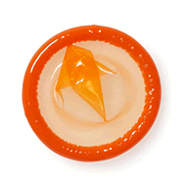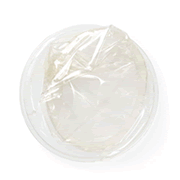5 myths about lube, busted
Just a few of the reasons why you should probably drop everything and shop for lube right now.

Once upon a time, not that long ago, there was a tube of water-based lube sitting all alone on the pharmacy shelf. It was the same tube your gynecologist had in her office, and it was hard to see it as sexy after you’d watched her squirt it onto her gloved fingers.
We live in a happier time now, when drug stores and the Internet offer oh so many lube options. If you venture to a sex shop online or in real life, the number of choices can be staggering.
Many people already see lube as an important and fun addition to our sex lives, but there is still plenty of misinformation out there about this slippery substance. Allow us to debunk the most common of these myths.
Myth 1: Only old or frigid people need lube.
A lot of people still look at lube as a sort of medicine designed to solve the problem of a dry vagina. Unfortunately, when we think of something as a solution, we imply that there’s something wrong with the people who use it. The truth is that all kinds of people use lube for all kinds of reasons—and there’s nothing wrong with them.
When you get turned on, blood rushes to your genitals, which begin to swell. When it comes to female anatomy, the walls of the vagina swell and produce clear and odorless natural lubrication that protects against friction and irritation during sex. There can be lots of reasons why your body may not always produce enough wetness to make a sexual experience comfortable. Plenty of things can interfere with the lubrication process—being dehydrated, taking certain common medications, feeling uncomfortable with your partner or the situation, or not being really turned on (yet). Even when everything is in tip-top shape, you might still find sex more enjoyable with lube. Lots of people do.
Myth 2: Lube is just for penis-vagina sex.
Penetration produces more friction than some other sex acts, so it makes sense that we would use lube when having penis-vagina sex. But it’s not the only sexual activity that can be more fun with extra wetness. Inserting anything into the vagina—fingers, a fist, a sex toy—will be smoother with lube. Rubbing and touching your partner’s vulva or penis can feel extra hot if your hands are a little slippery. Bumping and grinding without penetration can get to a whole new level when there’s lube involved. And, of course, any kind of anal play needs lots of lubrication because the butt produces none of its own.
Myth 3: If some lube is good, more must be better.
Actually, there is such a thing as too wet. While too much friction is bad because it can irritate skin, having a little friction is what makes sex enjoyable. Too much lube can dull the intensity of the sensation. If you got carried away in your initial application, don’t fret. Grab a towel or the t-shirt you just threw on the floor and wipe a little bit off.
Myth 4: All lubes are the same.
Not all lubes are created equal. Settling on your favorites is mostly a matter of learning about the options and trying them out. You might prefer one lube over another based on the ingredients, the smell, the packaging, or the price. Here are the three kinds of lube you can choose from.
Water-based lube. That tube from your gyno’s office is actually a solid choice. The best thing about water-based lubes is that they’re always safe to be used with condoms and sex toys. Water-based lubes also tend to be gentle on the skin, and they wash off of people, clothing, and sheets very easily. The drawback is that they don’t stay wet all that long—but you can get them wet again by adding some water, saliva, or just another drop of lube.
Silicone-based lube. Many popular lubes are made with silicone, and they’re totally safe to use with condoms. Beware of using silicone-based lube with other silicone-based products like diaphragms or certain sex toys, though, because it may break those products down over time. In its liquid form, silicone is a very silky material that can feel soothing on the skin and protect it from irritation. Silicone lubes typically last longer than water-based ones and are less sticky. Silicone is also harder to wash off, which can be a good thing if you’re having sex in the shower, or a bad thing when you’re cleaning up your body and your sheets.
Oil-based lube. Oil-based lubes work well to help skin glide gracefully and comfortably. (There’s a reason massage therapists put oil on your back before working the knots out of your muscles.) Sadly, they’re bad news for condoms and sex toys. If condoms and toys aren’t an issue and you want to go oil-based, remember that oil and water don’t mix—the oil just sits on top. That means your after-sex shower might not be as effective as you’d hope, and drips that got on your sheets may not come out in the washing machine.
Wet stuff around the house. Obviously, there are things that are not made specifically to serve as lubricants that could work well to reduce friction, and you likely have many of them around the house. My gynecologist once told me that olive oil was the best lube, and there are also other cooking oils, baby oil, moisturizing lotions, or Vaseline. While these can work well in a pinch, it’s important to remember that many of them are oil-based and should never be used with condoms. If you rely on condoms for pregnancy or STI prevention, it’s definitely worth it to purchase condom-safe lube. Other household items like honey, jam, and some bath oils contain sugar, which can upset the vagina’s natural bacteria and lead to yeast infections. Flavored lubes may also contain sugar. This doesn’t mean you can’t use them—it is fun to put them on and lick them off—but they’re not a good option for lubricating penetration. Even when used externally on the vulva or penis, flavored lubes should be washed off promptly.
Myth 5: My condom is lubricated, so I’m good to go.
Condoms and lube go together like, well, condoms and lube. Unlubricated latex can be very dry and cause more friction than skin-to-skin contact; that’s why lube is so important. Many condoms come already lubricated on the outside to prevent friction. Some also come with lubrication on the inside, which can add to the pleasure of the person wearing the condom. Applying more lube to the inside or the outside of a condom—or both—can add to the sensation that there’s nothing in between you and your partner.
Now, you shop
When it comes to picking a favorite lube, first you’ll want to rule out the ones that won’t work for you. If you rely on condoms for birth control or STI prevention, oil-based lubes are out. If you have sensitive skin, you may want to avoid dyes or scents. Then experiment. Pick a price and buy a few small bottles. Test for which feels better, how they wash up, and whatever else is important to you.
Once you’ve got a type you prefer, try out different brands. (Starting with a sample kit like this one prevents having big bottles of lubes you don’t really like.) You may like different lubes for different purposes and choose one for sex and another for foreplay. If you’re feeling adventurous, consider lubes that add sensations like warming or tingling. These can increase the pleasure that you’re already feeling, although some people find the sensation irritating rather than arousing. After all, one person’s warming is another’s burning. Still, you never know until you try. So happy shopping—and have some fun!
How do you feel about this article?

Heat up your weekends with our best sex tips and so much more.

